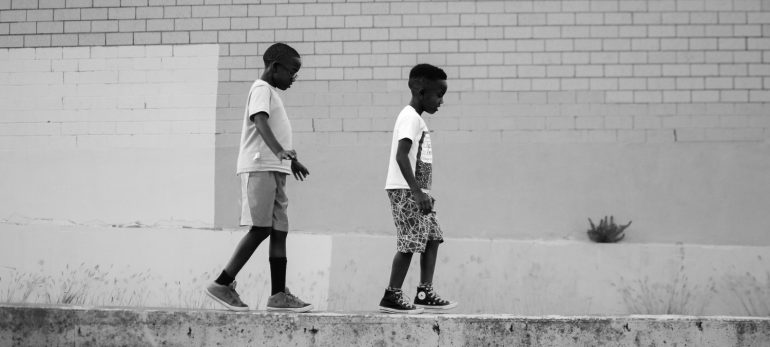The analysis confirmed what we already knew: Black people left Austin at an alarming rate. But, the surprising revelation – one that made news nationwide – was that Austin was the only U.S. city in which the Black population shrunk at the same time that the total population grew. Black people were moving out, and new Black people were not among those moving in.
Now the report author is back, with a related study and new analysis. The study analyzes the reasons for moving that are cited by Black people who left. And at least one City of Austin official questions the validity of some of the results.
The latest report by Dr. Eric Tang, associate professor and faculty fellow at the Institute for Urban Policy Research (IUPRA) and Analysis and Division of Diversity and Community Engagement at UT, shows that the majority of Black people who left Austin in the first decade of this century say their number one reason for leaving was “affordability.”
When did East Austin gentrify?
For the 2016 study, researchers interviewed 100 African Americans who, between 1999 and the present, left Austin for places like Pflugerville, Round Rock, Manor, Bastrop, Elgin, Del Valle, and other cities or suburban areas. Researchers worked closely with leaders from three East Austin churches to identify church members who moved out of Austin but continue to return to their old neighborhoods to attend one of the three churches. The average age of respondents was 52 years old, and the average income of those surveyed, $58,540. It should also be noted that more than 50 percent of the people surveyed moved out of Austin between 1999 and 2009.
The majority of Austinites who moved in the first decade of 2000 were in their 30s, according to the U.S. decennial census report. That age group is much younger than the average age of people IUPRA most recently surveyed. And housing prices in East Austin were still affordable when Black residents moved between 1999 and 2009, says City of Austin Demographer Ryan Robinson, who has read both IUPRA studies. At the same time, by 2014, the taxable residential values — a home’s market value minus property-tax exemptions — in Travis County, in which Austin lies, were up an average of 8 percent, according to Travis County’s chief appraiser, Marya Crigler.
Robinson questions the validity of Dr. Tang’s conclusions that Black residents left Austin at the beginning of the decade due to unaffordability; he says property values and corresponding tax rates had not yet risen. It’s only been more recently that East Austin became less affordable, resulting in gentrification. Gentrification happens when people with less income move en masse because their neighborhood is no longer affordable, due to an influx of residents with higher income who make improvements that increase neighborhood property values.
Gentrification. If there’s one really dirty word in Austin, that’s it.
It’s a well-known fact that in 1928, the City of Austin issued a plan that intentionally corralled Black people into East Austin to segregate them from the city’s mainstream. That was bad, but it was 1928 – a mistake that could be written off as part of old ways of thinking and a bygone era. Because Austin moved all the Black people to East Austin in the 1920s, if unaffordability were the reason that they moved during the first part of the decade, it would smack of city lack of interest in and insensitivity toward Black residents. Perhaps the city could have taken action to protect the neighborhood and Austin’s Black population. From the city demographer’s perspective, it’s important to consider that the former East Austin residents in IUPRA’s 2016 study moved prior to the neighborhood’s gentrification.
Because Austin moved all the Black people to East Austin in the 1920s, if unaffordability were the reason that they moved during the first part of the decade, it would smack of city lack of interest in and insensitivity toward Black residents.
“My initial take on it is that on the one hand, the data reinforces a long-running narrative we have supported,” Robinson said, “that African Americans in Austin were drawn to the suburbs – people who left Black households from 2000 to 2010 and not folks who have left since then.”
Robinson says the controversy surrounding today’s East Austin gentrification that has recently forced Black residents out of the city might have influenced how the individuals responded to this latest survey. In other words, because they know that East Austin is unaffordable to them now, they report that is why they left then.
“I’m not sure you can say that in that decade [2000-2010] housing had reached the point of unaffordability we’ve seen recently. To me, the Black exodus of the 90s and 2000s is a story of empowerment and not displacement. Only recently has it become an issue of displacement. I think what [Dr. Tang] may be reporting are the perceptions of Black households today that overemphasize the issue of affordability then.”
And, because the decline of Black people between 2000 and 2010 was made up mostly of children under the age of 18, Robinson believes Black Austinites made an empowered decision to leave their homes in East Austin, not because they found better jobs, but to send their children to better schools. He says schools like Casis Elementary, West of I-35, were thriving financially, thanks to huge donations that translated into computers in every classroom, Chinese, Japanese, and Russian language courses, and other benefits for students.
“If you were to go over to Metz Elementary [in East Austin], none of that existed,” Robinson said, citing this as a primary motivator for Black parents with school aged children to leave the area.
Dr. Tang agrees that some of the Black people who left Austin between 2000 and 2010 were part of middle class families looking for better housing deals and better public schools.
“Still,” he says, “and this was a surprising statistic from our study, many of them said they would move back to Austin if they could. Even though they are happy with Round Rock and Pflugerville, they still miss ‘home.’ Austin is where they have their roots. And those roots are irreplaceable.”
Many of them said they would move back to Austin if they could…Austin is where they have their roots. And those roots are irreplaceable.
Beyond East Austin
Though low the numbers may be, Black people do still reside in Austin. IUPRA’s first two studies are but a first step toward proposing meaningful policy recommendations to the city. There’s much more to be studied about Austin’s Black population.
“We are releasing a third study in the fall entitled Those Who Stayed,” Dr. Tang said. “It’s based on surveys with African American residents who continue to live in the heart of the African-American cultural heritage district adjacent to Huston-Tillotson University. We want to know, are they benefiting from the changes taking place in their neighborhoods? What impact are higher property values having on them? Why did they decide to stay when so many of their neighbors moved out?”
When asked why researchers only focused on East Austin churchgoers for the 2016 study, Dr. Tang said, “The churches are a bedrock of the historic African-American community in East Austin.
“Those who moved outside of the city limits still come back to church on Sundays, and so this seemed like a good place to meet people who fit the criteria of our study. A large and broad cross-section of the African-American community still attends church, particularly in the south. By going to the churches, we were able to interview people of all socioeconomic backgrounds and professions.”
To discern how and why Black people who currently reside in Austin do so, some may wonder whether a new study should focus on more than East Austin. There are a mix of “types” of Black people throughout Austin, from students to the elderly, singles, couples, gay, straight, gainfully employed, professionally upwardly mobile, who – believe it or not – are quite happy people who can afford it and choose to call Austin home. Like 34-year-old artist and musician Cherie Council who lives in Austin’s fast-growing, trendy ’04 zip code.
“I think Austin is awesome in a lot of ways,” Council said. “I like that it’s clean and safe. I do think it’s a little boring and whitewashed and that development and the influx of a certain kind of young professional has made it very homogenous. But, there are definitely Black people out there; not as many as in other cities, but they’re there and they’re awesome and at the end of the day, I like to make lemons out of lemonade. The Black people here make great music, they’re brilliant artists, and they’re smart, talented people.”
It’s a growing city so there’s a lot going on. If there’s not something there for me, I’ll make it. Austin is fertile ground for that.
Darrell Malone is a 29-year old computer programmer and entrepreneur who lives in North Austin. For him, Austin is a cool place to be.
“Originally I came because I wanted to start a video game bar, and I felt like this was a good place to start,” he said. “That didn’t end up taking off the way I wanted it to, but I stayed because I love it.”
Malone isn’t bothered by the fact that he doesn’t see hoards of people who look like him. And he’s got a bold approach to the complaint that Austin doesn’t offer much for Black people.
“Austin has a lot of opportunity to offer – a lot of industry, business, technology, food, service,” he said. “It’s a growing city so there’s a lot going on. If there’s not something there for me, I’ll make it. Austin is fertile ground for that.”












